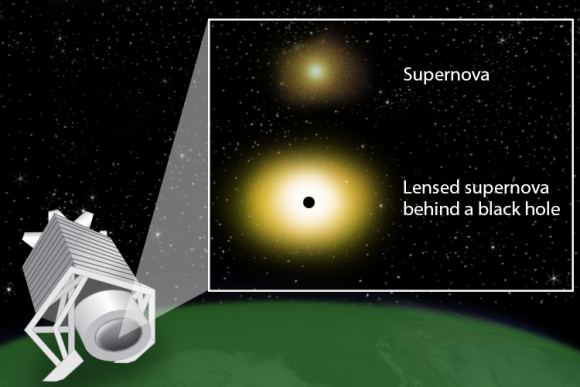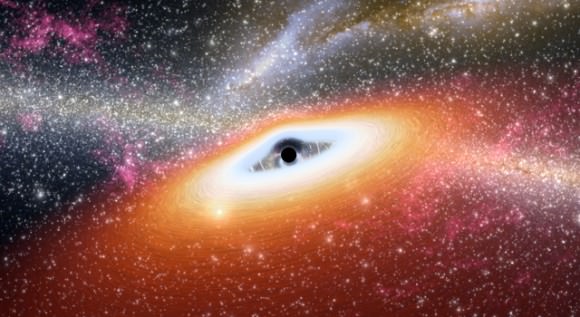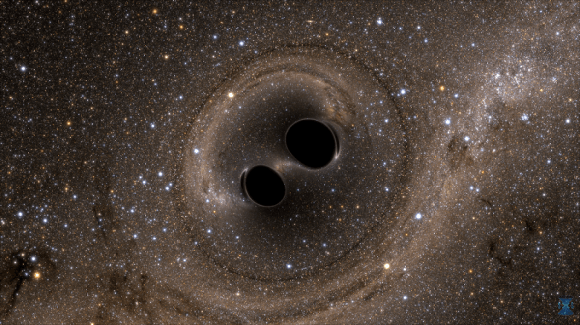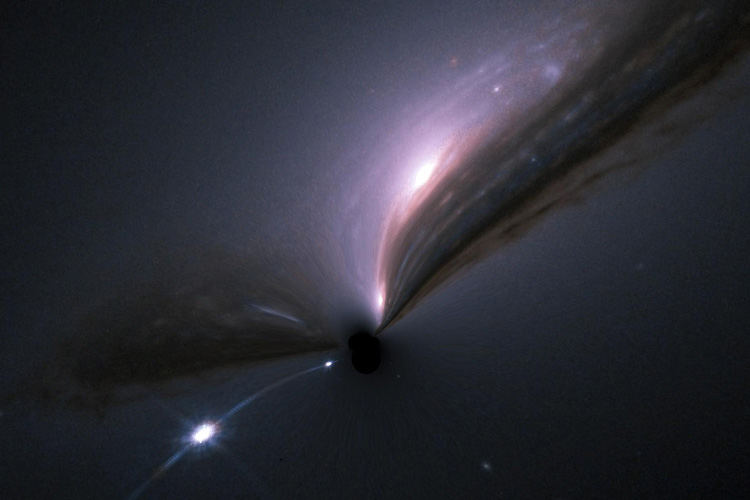In February of 2016, scientists working for the Laser Interferometer Gravitational-Wave Observatory (LIGO) made history when they announced the first-ever detection of gravitational waves. Since that time, multiple detections have taken place and scientific collaborations between observatories – like Advanced LIGO and Advanced Virgo – are allowing for unprecedented levels of sensitivity and data sharing.
This event not only confirmed a century-old prediction made by Einstein’s Theory of General Relativity, it also led to a revolution in astronomy. It also stoked the hopes of some scientists who believed that black holes could account for the Universe’s “missing mass”. Unfortunately, a new study by a team of UC Berkeley physicists has shown that black holes are not the long-sought-after source of Dark Matter.
Their study, “Limits on Stellar-Mass Compact Objects as Dark Matter from Gravitational Lensing of Type Ia Supernovae“, recently appeared in the Physical Review Letters. The study was led by Miguel Zumalacarregu, a Marie Curie Global Fellow at the Berkeley Center for Cosmological Physics (BCCP), with the support of Uros Seljak – a professor of cosmology and the co-director of the BCCP.
To put it simply, Dark Matter remains one of the most elusive and troublesome mysteries facing astronomers today. Despite the fact that it comprises 84.5% of the matter in the Universe, all attempts to discover it have so far failed. Many candidates have been proposed, ranging from ultralight particles (axions) to Weakly-Interacting Massive Particles (WIMPS) and Massive Compact Halo Objects (MACHOs).
However, these candidates range in mass by an order of 90, which several theorists have tried to resolve by proposing that there could be multiple types of dark matter. However, this would require different explanations for their origins, which would only complicate cosmological models further. As Miguel Zumalacárregui explained in a recent UC Berkeley press release:
“I can imagine it being two types of black holes, very heavy and very light ones, or black holes and new particles. But in that case one of the components is orders of magnitude heavier than the other, and they need to be produced in comparable abundance. We would be going from something astrophysical to something that is truly microscopic, perhaps even the lightest thing in the universe, and that would be very difficult to explain.”
For the sake of their study, the team conducted a statistical analysis of 740 of the brightest supernovas discovered (as of 2014) in order to determine if any of them had been magnified or brightened by a the presence of an intervening black hole. This phenomena, where the gravitational force of a large object magnifies the light coming from more distant objects is known as “gravitational lensing“.

Basically, if black holes were the dominant form of matter in the Universe, then gravitationally-magnified supernovas would occur rather frequently because of primordial black holes. These hypothetical forms of black hole are believed to have formed within the first few milliseconds after the Big Bang in parts of the Universe where mass was concentrated at tens or hundreds of Solar Masses, causing the earliest black holes to form.
The presence of this black hole population, as well as any massive compact objects, would gravitationally bend and magnify light from distant objects on its way to Earth. This would be especially true of distant Type Ia supernovas, which astronomers have used for decades as the standard brightness source for measuring cosmic distances and the rate at which the Universe is expanding.
However, after conducting a complex statistical analysis of data on the brightness and distance of 740 supernovas – 580 in the Union and 740 in the Joint Light-curve Analysis (JLA) catalogs – the team concluded that eight of the supernovas should be brighter by a few tenths of a percent than what has been historically observed. However, no such brightening was detected, even when low-mass black holes were factored in.
“You cannot see this effect on one supernova, but when you put them all together and do a full Bayesian analysis you start putting very strong constraints on the dark matter, because each supernova counts and you have so many of them,” said Zumalacárregui.

From their analysis, they concluded that black holes can make up no more than about 40% of the dark matter in the Universe. After including 1,048 more bright supernovas from the Pantheon catalog (and at greater distances), the constraints became even tighter. With this second data set, they obtained an even lower upper limit – 23% – than in their original analysis.
These results suggest that none of the Universe’s dark matter consists of heavy black holes, or any similarly massive objects like MACHOs. “We are back to the standard discussions,” said Seljak. “What is dark matter? Indeed, we are running out of good options. This is a challenge for future generations.”
This study was based on earlier research conducted by Seljak in the late 1990s when scientists were considering MACHOs and other massive objects as a possible source of dark matter. However, the study was limited due to the fact that only a small number of distant Type Ia supernovas had been discovered or had their distances measured at the time.
In addition, the search for Dark Matter shifted shortly thereafter from large objects to fundamental particles (such as WIMPs). As a result, plans for follow-up studied did not materialize. But thanks to the LIGO observations of gravitational waves, the possible connection between black holes and dark matter once again emerged and inspired Seljak and Zumalacárregui to conduct their analysis.

“What was intriguing is that the masses of the black holes in the LIGO event were right where black holes had not yet been excluded as dark matter,” Seljak said. “That was an interesting coincidence that got everyone excited. But it was a coincidence.”
The theory of Dark Matter was officially adopted in the 1970s, during the “Golden Age of Relativity”, to account for the discrepancies between the apparent mass of objects in the Universe and their observed gravitational effects. It appears that half a century later, we are still trying to track down this mysterious, invisible mass. But with every study, additional constraints are being placed on Dark Matter and possible candidates eliminated.
Given time, we might just unlock this cosmological mystery and be one step closer to understanding how the Universe formed and evolved.
Further Reading: Berkeley News, Physical Review Letters

